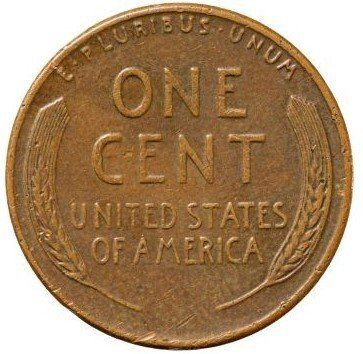Many might overlook a one cent penny, but within the realm of coin collecting, the Lincoln Wheat Penny, minted from 1909 to 1958, stands as a highly sought-after coin. These seemingly common pennies can hold surprising value, making them treasures for numismatists and casual collectors alike.
In 1908, the U.S. Mint commissioned sculptor Victor D. Brenner to create a new cent design. The goal was to honor Abraham Lincoln on the centennial of his birth. This marked a significant moment as it was the first time a U.S. President was featured on a widely circulated coin. The composition of these early pennies was 95% copper. However, during World War II, in 1943, copper was needed for the war effort, leading to a temporary change to zinc-coated steel. Interestingly, a few error coins from the following year were mistakenly struck on steel planchets, becoming exceptionally rare and valuable.
The Wheat Penny eventually reverted to its original 95% copper composition. In 1959, the iconic wheat design was replaced with Frank Gasparro’s Lincoln Memorial reverse, marking the end of an era. Brenner’s design for the Wheat Penny was inspired by a desk plaque of Abraham Lincoln he had created in 1907. The obverse features a right-facing portrait of Abraham Lincoln, while the reverse showcases two stalks of durum wheat framing the denomination “ONE CENT” and “UNITED STATES OF AMERICA,” with the motto “E PLURIBUS UNUM” along the top.
 Reverse of a wheat cent
Reverse of a wheat cent
A point of interest for collectors lies in the initials “VDB” of Victor D. Brenner. Initially, the 1909-S VDB and 1909 VDB pennies featured Brenner’s initials prominently on the reverse. This caused controversy, perceived as self-promotion, and the initials were quickly removed. However, in 1918, the initials were reintroduced, this time much smaller and located on the obverse, near Lincoln’s shoulder.
Key Wheat Penny Years and High-Value Finds
Among the various Wheat Pennies, the 1958 Wheat Penny holds a special place as the final year of its production. Its status as the last of its kind contributes to its consistent demand and value. However, the truly exceptional 1958 Wheat Penny is the 1958 Double Die Obverse variety, a striking error coin that has fetched as much as $336,000 at auction. This highlights how errors can significantly increase a One Cent Penny Worth Money.
Discover the Rarest and Most Valuable Wheat Pennies
For those hoping to find a truly valuable one cent penny worth money, certain Wheat Pennies stand out. If you happen to find any of these in Mint State 60 (MS60) condition or better, you might be in possession of a significant treasure. These values are estimations for coins in MS60 condition or higher:
- 1917 Doubled Die: $3,000 – $6,000. The “Doubled Die” refers to a minting error that creates a doubling of design elements, making these error coins highly desirable.
- 1955-P DDO: $4,000 – $16,000. Similar to the 1917, the 1955 Doubled Die Obverse is a prominent error, easily visible and sought after by collectors.
- 1922-D No D Strong Reverse: $12,000 – $30,000. These pennies were minted in Denver but lack the “D” mint mark, a significant error.
- 1944-P Steel: $50,000+. As mentioned earlier, 1943 pennies were steel, making 1944 steel errors from any mint incredibly rare and valuable.
- 1944-D Steel: $60,000+. Like the 1944-P Steel, Denver minted steel errors from 1944 are highly prized.
- 1958-P DDO: $100,000 – $200,000. This Double Die Obverse from the final year of Wheat Pennies is among the most valuable of all Wheat Cents.
- 1943 Bronze: $300,000+. In 1943, pennies should have been steel, making any bronze (copper) examples accidental and exceptionally rare.
- 1943-S Bronze: $500,000+. San Francisco minted 1943 bronze errors are even rarer than those from Philadelphia.
- 1944-S Steel: $700,000 – $1,000,000. San Francisco 1944 steel errors are considered some of the most valuable error coins in the Wheat Penny series.
- 1943-D Bronze: $800,000 – $2,000,000. The Denver minted 1943 Bronze penny is often cited as the most valuable of all Wheat Pennies, with only a few known examples.
Key Dates in Wheat Pennies: What to Look For
To easily check your Wheat Pennies, keep an eye out for these key dates. These are dates and mint marks known for their relative scarcity and higher values within the Wheat Penny series:
- 1909 S
- 1909 S VDB
- 1914 D
- 1922 Plain (No Mint Mark)
- 1931 S
While most one cent pennies in circulation are worth just face value, the Lincoln Wheat Penny series holds numerous exceptions. By knowing the key dates, mint marks, and potential errors, you can unlock the hidden value within these classic American coins. You never know when you might find a one cent penny worth money far beyond its face value!